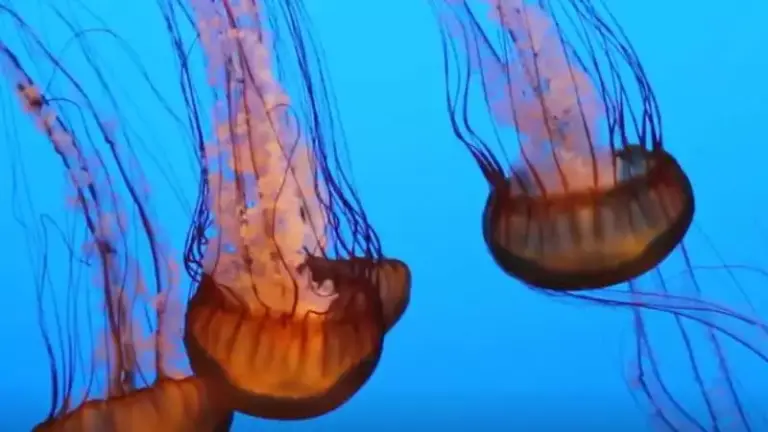Given that the surface of the earth is 71% water, it shouldn’t be surprising that some of the planet’s most colossal creatures reside in the oceans. Now, there are certainly some fishy stories when it comes to measurements, but these marine beasts are truly among the biggest. Without further ado, here are ten of the largest creatures found on shore.

#1. Orca
Near the end of 2016, a large male Orca was found off the shore of Sechelt, British Columbia. The immense creature was originally spotted the previous night, but authorities had been unable to reach him until the following morning. Orcas, otherwise known as killer whales, are a toothed whale, which feed on other marine animals. A male Orca can grow up to 26 feet long, and weigh in excess of 6 tons. They are apex predators, meaning they have no natural enemies that prey on them. They are highly social creatures, so they are rarely seen alone. Members of the marine mammal research program descended quickly on the scene to perform a necropsy. Once they arrived, it was discovered that the Orca was part of an endangered southern resident pod. Resident whales are typically spotted in the coastal waters of the Northeast Pacific, specifically British Columbia and Washington. J-34, a 22-Foot-long, 18-Year-old male killer Whale, was part of the J-pod, which lives off the coast of Vancouver. They were declared endangered under the “Species at risk Act”, which protects organisms and their habitats, in April 2003. The J-pod consists of 80 whales, both male and female.
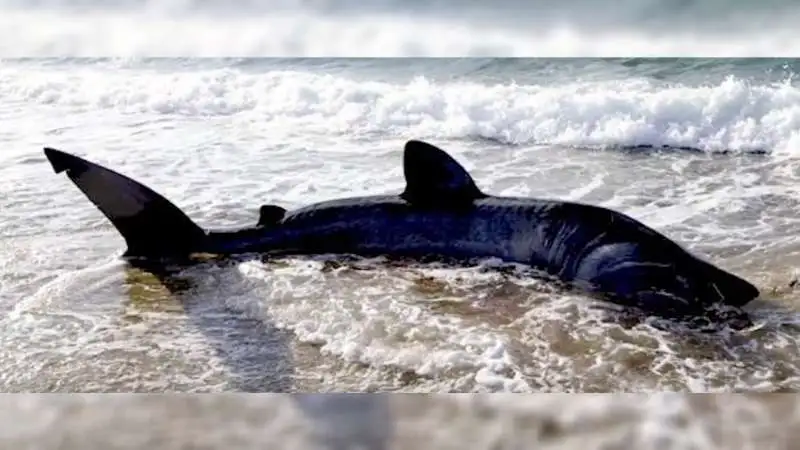
#2. Basking Shark
One of the largest living creatures in the ocean isn’t exactly what you may be thinking. Most often, when we think about large marine animals, we think of whales. In this case, we’re look at a 28-foot-long Basking Shark. In April 2013, a local homeowner spotted the body of one of these mammoth creatures on a Rhode Island Beach. After the police were notified about the unfortunate incident, biologists with the Northeast fisheries science center were called to perform a necropsy, in order to determine what caused the Shark to pass. It is believed, however, that the Shark was already gone before it washed ashore. Despite their massive and intimidating 1-meter-wide jaw, Basking Sharks are really quite harmless. They are filter feeders, like Blue Whales. They use more than 5,000 Gill Rakers to strain plankton from the water. They can filter around 1.5 Million liters of water per hour in order to fill up on these nearly microscopic organisms. Basking Sharks are also rather slow moving, traveling at a very leisurely pace of only 3 miles per hour. They also tend to cover large distances in search of food. They can grow to be over 45 feet long, and weigh several tons.
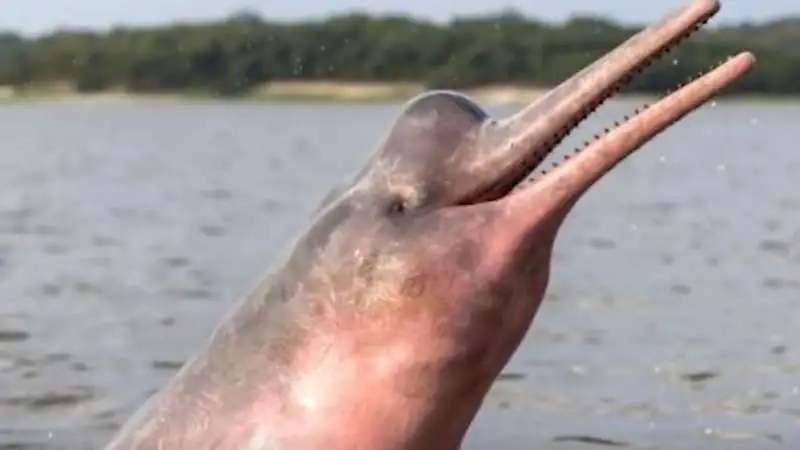
#3. Dolphin
On occasion, when a marine animal comes to the end of its life, its body may wash up on shore. This was the case when a mysterious looking creature found its way onto a remote Russian beach. On the Shoreline of Sakhalin Island, which is surprisingly closer to the US than it is to Moscow, a seemingly alien looking Beast was discovered. It had a bird-like beak, and what appeared to be fur on its tail. Was this some kind of prehistoric giant, suddenly surfacing after thousands of years? Well, that was a popular theory with the locals. However, marine biologists had other ideas. After examining the remains, Nikolay Kim, deputy head of the forecasting department at the Sakhalin Research Institute of Fisheries and oceanography, believed that it was most likely to be a large Dolphin. He felt it was unlikely that it had come from nearby waters, and had likely been brought there by warmer currents. The thick, long, ‘Hair’ on the body, was actually decomposing skin and muscle tissue. And the beak-like snout was just the bare bones of a Dolphin’s nose. Some claim that it could be a large Ganges River Dolphin, which are usually found in freshwater regions of Nepal, India, Bangladesh, and Pakistan.
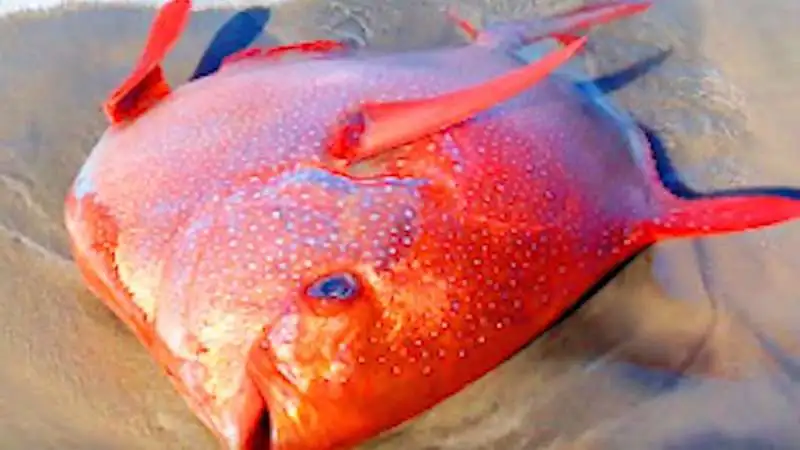
#4. Opah
They are known as the world’s first truly warm-blooded fish, but are rarely seen by humans. Opahs are brightly colored, deep ocean dwelling fish, which can reach up to 6.6 feet long and weigh over 100 LBS. They dwell far below the surface of the waves in cold, deep water. Unlike most fish, the Opah, also known as the moonfish, can regulate its body temperature. They use their large pectoral fins to generate heat, and continually warm their bodies. More often than not, Opah are caught by longliners in distant water, or even anglers fishing at great depths. Opah are considered a delicacy in some areas, and go for over $12 a pound. In September 2010, 50-year-old Scott Williams was on a cliff overlooking a San Diego beach with friends, when they noticed a manhole sized object floating in the water. It was bright red and roughly 50 yards from the shoreline. The surfer and his posse realized that the object was actually a fish, and rushed to the beach. Williams was amazed to see the large Opah was completely untouched and in perfect condition, undisturbed by other marine life. Some of the group suggested trying to place the fish back into deeper water, however, it had already passed.

#5. Whale Shark
In December 2016, locals discovered a grisly scene at the Baidhara Penta beach in the Puri district of Odisha, India. In the early morning hours, a 42 feet long, 28 feet wide Whale Shark carcass had washed up on shore. Photos taken at the scene show the creature’s immense size in comparison to those in the surrounding crowd. Whale Sharks are the largest fish in the world. Males can grow upwards of 40 feet in length or more. Unfortunately, their population has dwindled over the last 75 years, due to collisions with boats, overfishing, and accidentally being trapped in deep sea nets. They were also recently added to the endangered species list. They reside primarily in tropical and warm temperate waters, and can dive to depths of up to 5,900 feet below the surface. They are filter feeders, and prey solely on plankton. Despite their gigantic size, they are completely harmless to humans, and will often allow people to approach as they are very docile creatures. Authorities in India believe that the Whale Shark passed away 10 to 15 days before washing ashore. The body was removed using a crane in order to perform a necropsy to determine what caused the Shark’s demise. Time to dive right in, and fish out our quiz Question. How many feet long can a Basking Shark grow? You’ll find out soon!
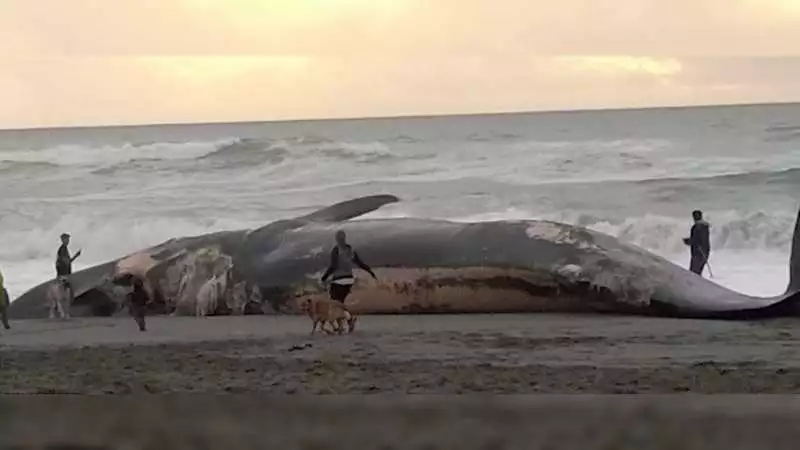
#6. Blue Whale
Driving down Highway 101, most Travelers expect to see the calming waters of Gold Beach, Oregon. However, in November 2015 motorists were met with a surprising sight. The decomposing carcass of a 78 Foot Blue Whale had washed up, and was stretched across the beach. Blue Whales are incredibly rare in Oregon, as their waters are usually home to gray Whales, a much smaller species. The marine mammal director at the Oregon State University’s Hatfield Marine Science Center was floored when he received the call regarding the blue giant. Bruce mate has been conducting research in the state since 1968, and claims that this was the first time he’d seen a Blue Whale on shore. Upon inspection of the gigantic corpse, Bruce stated that it was likely environmental factors that prematurely ended the Whale’s life, as they can normally live between 80 – 110 years. The changing water temperatures caused a decrease in krill, which are the Blue Whales main food source. Usually, when a Whale this size washes up on shore, protocol calls for the carcass to be buried. In this case, given that the sighting was so rare, researchers decided to preserve the skeleton instead, so it could be displayed at the Hatfield Marine Science Center.
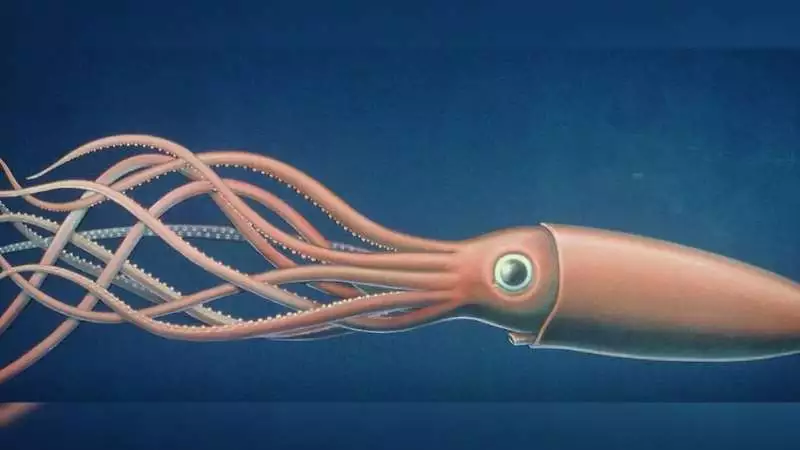
#7. Giant Squid
At least once in our lives, many of us have read Jules Verne’s Twenty Thousand Leagues Under the Sea or have heard of the monstrous kraken. Thanks to various fictional works, legends and folk stories, giant Squids have evolved into ship drawing leviathans, capable of devastating even the bravest sailor. In truth, giant Squids can grow up to 43 feet, from the tip of their posterior fins to the ends of their long tentacles. They can be found in all of the world’s oceans, but are rarely spotted as they tend to reside in deep waters. Given their usual habitats, it’s not often we see one washed ashore. However, in October 2013, a 30-foot-long giant Squid appeared on the La Arena beach in the Spanish community of Cantabria. Locals were stunned to see the Gargantuan blob of tentacles and oversized eyes. According to the news reports, it weighed over 400 LBS. These creatures are still shrouded in mystery, so the remains were taken to the Maritime Museum of Cantabria for study. Like other cephalopods, including Cuttlefish and Octopuses, the giant Squid is thought to have a complex brain and extensive nervous system, but they are so incredibly elusive that there are still more stories than facts about them.
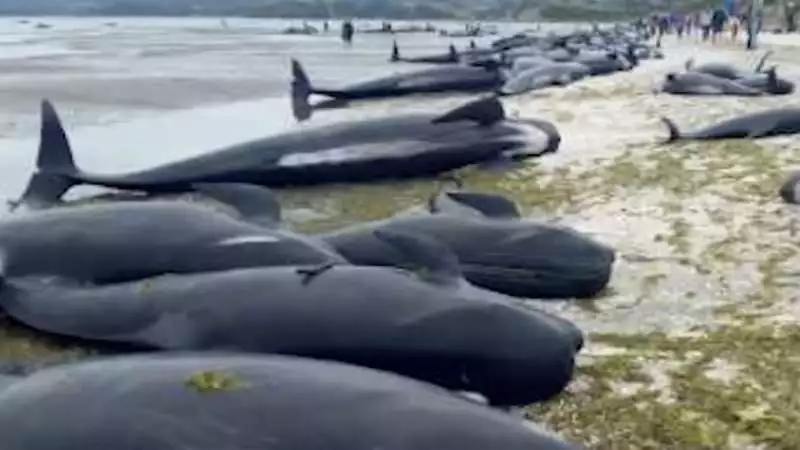
#8. Pilot Whale
Speaking of Squid, their natural predators, the pilot Whale, can grow up to 24 feet in length. Despite being called a ‘Whale’ they are actually members of the blackfish family, which includes Dolphins and Orca. They are highly social creatures who live in family pods of 10 to 30 individuals. Pilot Whales are mostly dark grey, brown or black in color, and are rather more robust than their Dolphin cousins. They are found worldwide, but their populations have been dwindling slightly due to overfishing and food scarcity. Pilot Whales are also among the most common standers, a term used to describe marine life that accidentally beaches themselves. In February 2017, more than 400 Pilot Whales became stranded on a New Zealand beach. Many sadly perished, but some were able to be saved, as more than 500 volunteers pushed them back into the waves. Thankfully about 30% of the Whales were returned to the sea in time. However, they tried to return during high tide. This is a common occurrence, as the distressed Whales attempt to return to their pod mates. This instance was the third largest mass stranding New Zealand has encountered. The first was in 1918, when 1,000 Whales beached themselves on the remote Chatham Islands. The second largest was in 1985, when 450 came ashore in Auckland.
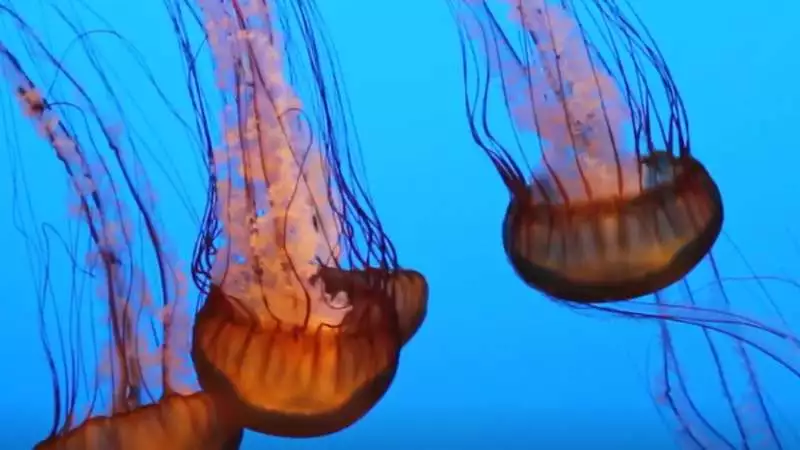
#9. Giant Jellyfish
Jellyfish that frequent the tropical waters around Tasmania tend to be on the smaller end of the scale, so it was quite a surprise when a giant Jellyfish appeared on the shore. The Bell of the Jellyfish was five feet wide, with its tentacles extending an estimated 79 feet. However, given that a Jellyfish’s body is made up of 94% water, it resembled a puddle of slime when beached. It was discovered by the Lim family as they explored the Southern beach. Their twelve-year-old son, Xavier, was the first to spot the creature. He said that he’d touched the slimy section, but not the tentacles, which can still sting for some time after the Jellyfish has perished, and said it was “Pretty Cool”. Jellyfish expert Dr. Lisa-Ann Gershwin of the Commonwealth Scientific and Industrial Research Organization (CSIRO) collected the remains. She said that it was the biggest she’d seen in Tasmania, and could even rival one of the largest ever discovered near other Australian states. She believes that the Jellyfish is likely a lion’s mane, one of the largest species of Jellyfish in the oceans. Their venomous stings are not life-threatening, but it would definitely hurt. Good thing little Xavier avoided its tentacles.
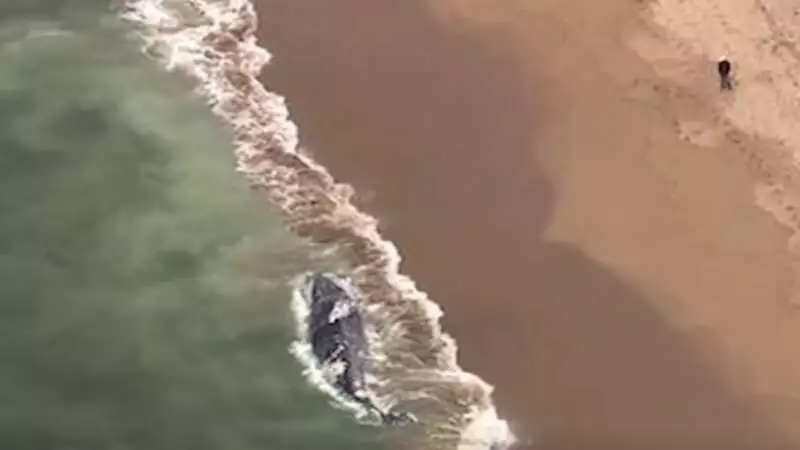
#10. Sperm Whale
Over the years, there have been various ‘Sea Monsters’ and unidentifiable blobs washing up on beaches around the world. Some of the most mysterious ones are nicknamed “Globsters,” organic masses of unknown origin that appear on the shoreline. With no visible eyes, no apparent bone structure, or even a defined head, these creatures can be devilishly difficult to identify. The term “Globster” was first coined by Ivan T. Sanderson in 1962. Often times, these masses are misidentified as the remains of prehistoric creatures or gigantic versions of Squids or Jellyfish. One such Globster emerged from the briny depths of the South Pacific and came to rest on Browns beach in Temuka, New Zealand. While walking along the beach in October 2009, Rose Fraser was taken aback by the sight of the monstrous lump. At first she thought it was a large piece of driftwood or a rock, until she got a closer look. She admitted to throwing a rock at it, and prodding it with a stick to ensure it wouldn’t jump up at her. Photos of the stringy, tentacled object were sent to the Department of Conservation in Wellington and the Otago University Whale experts. From there, they were able to identify the alien creature. It was the decomposing top half of a sperm Whale’s head, called the “Junk.” Ready to take the plunge? Did you hear the hint in the video about how long a Basking Shark can grow? If you guessed 45 feet, then you’d be correct! The largest fully grown male Basking Shark ever recorded was as tall as the Edgartown lighthouse in Massachusetts.

Pranav Bhardwaj is the ultimate entertainment aficionado, with an unbridled passion for all things pop culture. With a keen eye for the latest trends and a deep love for music, movies, and television, Pranav has made it his mission to bring the world of entertainment to life through his words.
